

WELCOME TO
LEE
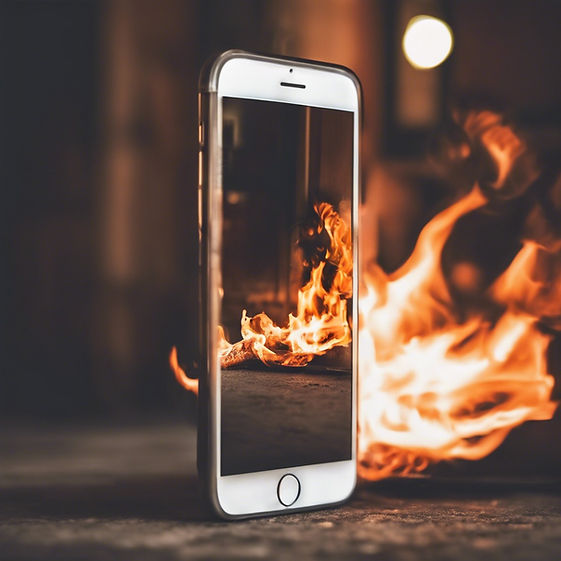
About Us
LEE was developed as a fire suppression technology used in containing/extinguishing lithium-ion battery fires.
LEE meets or exceeds the requirements of FAA advisory circular AC 120-80B for passenger aircraft.
LEE TOTAL SYSTEM
Total Components 18lbs
FIRE RESCUE PACK
DEVELOPED PER AIRLINE REQUEST WHERE SIZE AND WEIGHT ARE LIMITED
TOTAL WEIGHT 5.5LBS
PRICE : $600
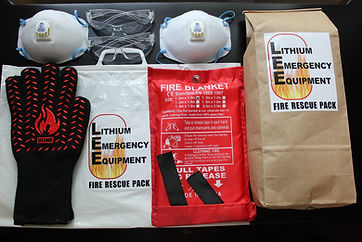
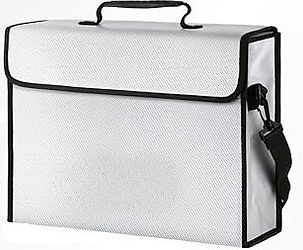

5200°F Fireproof Container
Dimensions 15x12x5

13 Inch Tongs
HOW TO USE LEE
During in flight attendant briefing they will announce that in the event of a device becoming hot to the touch to notify staff immediately to avoid potential lithium battery fires.
When notified flight staff will request “Get Lee” as the acronym for Lithium Emergency Equipment. The abbreviation will avoid a disturbance/panic with the passengers.
Based on the discretion of the crew members will determine the components used to fight the conditions of the batteries.

Depending on the state of the devise the flight staff will:
-
Don the fireproof gloves, respirator and eye protection
-
- Cover device with fireproof blanket or use for self protection
-
- Grasp device with tongs
-
- Place device in fireproof container
-
- Place sealable bag containing lithium battery agent designed to extinguish fire on top of device in or out of container
WHY USE LEE?
-
•Incidents of overheated lithium batteries causing smoke, fire, or extreme heat on aircraft are now happening at an average rate of more than one per week. The numbers have increased by 400% since 2015.
-
The LEE System is a one-time purchase until used. The Agent has an unlimited shelf life.
Current FAA Fire Suppression Protocol
Currently the 3 Principles To Fight A Lithium Battery Fire Onboard Aircraft per the Federal Aviation Association (FAA) are;
1. Quick aggressive action
2. Fire extinguisher to remove any flames
3. Cooling by pouring water on the fire hazard for 15min
Water cooling produces acidic vapors and steam containing dissolved harmful gases and airborne hazards like Hydrogen Fluoride which is worse in confined areas. It mixes with water forming Hydrofluoric Acid which can be ingested in inhalation, skin or eye contact causing tissue destruction and absorbed in the bloodstream. This can result in Hyperkalemia (cardiac arrhythmia paralysis).
FAA has stated DO NOT USE Burn bags. The finding is, it introduces more risk to the firefighter (the crew)
I. Burn Bags
The use of burn bags has been a common practice for many years in the aviation industry to contain and isolate lithium batteries and other dangerous goods that are suspected of thermal runaway or fire hazards. However, recent research and incidents have shown that relying solely on burn bags is not a good idea when it comes to managing lithium battery thermal runaways in aircraft. This tutorial will delve into the reasons why burn bags are not an effective solution and what alternatives can be considered to ensure the safety of passengers and crew.
II. Understanding Lithium Battery Thermal Runaways
Before we discuss the limitations of burn bags, it is crucial to comprehend the concept of lithium battery thermal runaways. Lithium batteries, commonly used in electronic devices and transportation applications, can generate excessive heat, leading to an uncontrolled chain reaction. This process can result in a fire, explosion, or the release of toxic gases. Therefore, preventing and managing thermal runaways is of utmost importance in aviation safety.
III. Limitations of Burn Bags
-
Insufficient Containment: Burn bags are primarily designed to contain known hazardous materials temporarily. However, when it comes to lithium battery thermal runaways, this containment method falls short. Thermal runaway events can cause a rapid increase in temperature and pressure, which can easily surpass the limitations of a burn bag, leading to its failure.
-
Limited Fire Suppression: While burn bags may provide some level of fire suppression, they are not specifically designed for this purpose. The materials used in burn bags are not effective in suppressing or extinguishing lithium battery fires. Therefore, relying solely on burn bags can lead to an inadequate response to fire incidents involving thermal runaways.
-
Risk of Smoke and Toxic Gas Emissions: Burn bags are typically made of materials that may not effectively contain smoke, toxic gases, and other byproducts generated during a thermal runaway. This can present serious health hazards to passengers and crew, compromising their safety in the event of an incident.
IV. Alternative Safety Measures
Considering the limitations of burn bags, it is crucial to explore alternative safety measures to manage lithium battery thermal runaways effectively.
Some viable options include:
1. Fire Suppression Systems: Implementing advanced fire suppression systems specifically designed to handle lithium battery fires can significantly improve the response to thermal runaways. These systems utilize fire suppression agents that are effective in extinguishing this type of fire and can better contain the hazardous byproducts.
2. Containment Solutions: Investing Enhanced in containment solutions specifically designed for thermal runaways can mitigate the risks associated with lithium battery incidents. These solutions can include specialized containers or compartments equipped with thermal management systems and fire suppression mechanisms.
3. Improved Handling Procedures: Educating and training aviation personnel on the proper handling and transport of lithium batteries is crucial to prevent thermal runaways. Implementing strict protocols for inspection, packaging, and documentation can significantly reduce the likelihood of incidents occurring onboard an aircraft.
While burn bags have been traditionally used to contain suspected dangerous goods, they are not an appropriate solution for lithium battery thermal runaways in aircraft. With the potential risks of fire, explosion, and toxic gas emissions, it is essential to explore alternative safety measures such as enhanced fire suppression systems, specialized containment solutions, and improved handling procedures. By prioritizing these measures, the aviation industry can better ensure the safety of passengers and crew in the face of this critical safety concern.
The governing entities encourage education in the form of e-learning hosted by the simulator training centers currently. This education is available in remote, In person or through various libraries including CAE.
Comparing: Current Systems to LEE
Other Systems that are designed to fight lithium battery fires onboard aircraft are flawed:
1. Will not fit all lithium batteries allowed to be transported on aircraft with or without airline approval. Including two each 160 watt hour batteries or one 300 watt hour battery, and the defibrillator with battery
2.Have very little or no safety equipment
3.Are designed for shipping of batteries not fighting a fire hazard
4.Have no fire extinguisher agent
5.Will not fit all laptop sizes above 18 inches.
6.The fire agent is not transportable but contained in the fireproof container.
7.The use of water can result in intrusion; which and can effect flight instruments as well as create a shock hazard
The LEE System containers will fit in most overhead passenger bins.
LEE Suppression Agent: is a dry agent media no danger of stream or vapors and absorbs all vapors and gases where water doesn’t.
No extinguishing water damage
Prevents re-flaming
Vapor and fumes accumulate on the grain surface and bound for disposal
Displaces oxygen and suffocates the fire
Absorbs thermal energy and prevents it from expanding
Absorbing fluids (e.g. electrolyte)
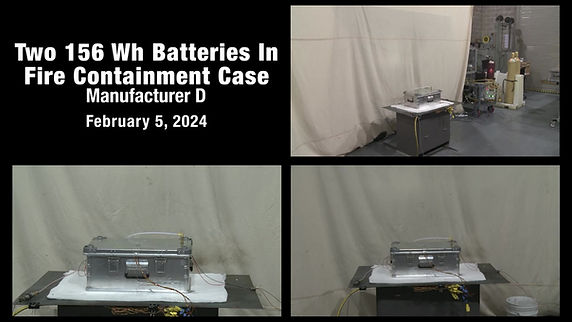
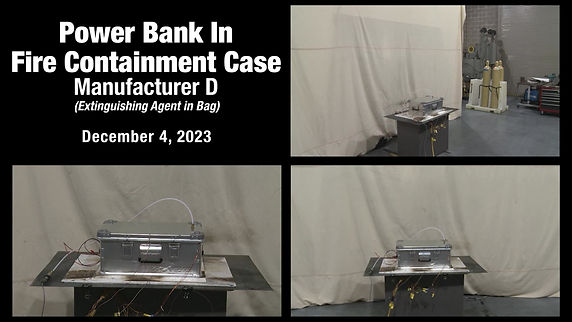
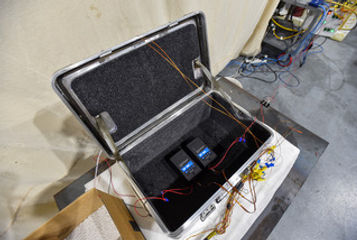


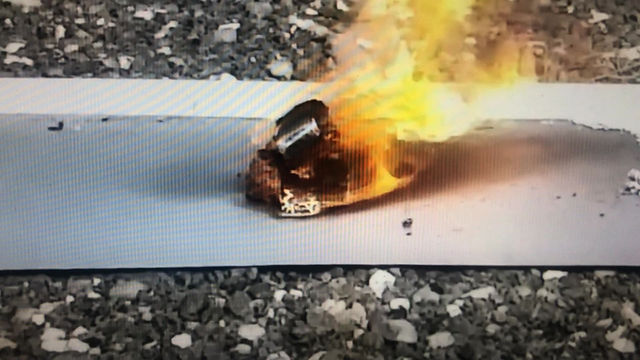
Lee was among several systems tested for the Safety Management System (SMS), and is not an endorsement or an advertisement from the FAA simply videos showing how the systems handled lithium battery fires
Certifications
-
United Nations Packaging Group 1, the highest rated designation for Hazardous Material Packaging Certified
-
UN Hazmat for domestic and international shipping including UN3480, UN3481, UN3490, UN3491
-
US Military Specifications under Mil-STD-810 Certified
Fireproof Lined Aluminum Container:
Fire Rescue Pack - Fireproof Container:
-
UL Certified


LEE Fire Agent Test Results & Certification

Contact
Daniel Tardiff
Commerical Pilot, UPS Airlines Aircraft Maintenace Technician for over 35 years, USMC/Navy Veteran
Call: 502-428-6939
Lisa Sasse, FRAeS
Subject Matter Expert for Lithium Emergency Equipment
FlightStart Solutions, Industry Safety Expert
Focused on Smoke, Fire and Fumes
Royal Aeronautical Society, Fellow
Associate Member of the Honorable Company of Air Pilots
Flight Safety Foundation, Previous Chair, BAC
Mobile: 201-788-1996








